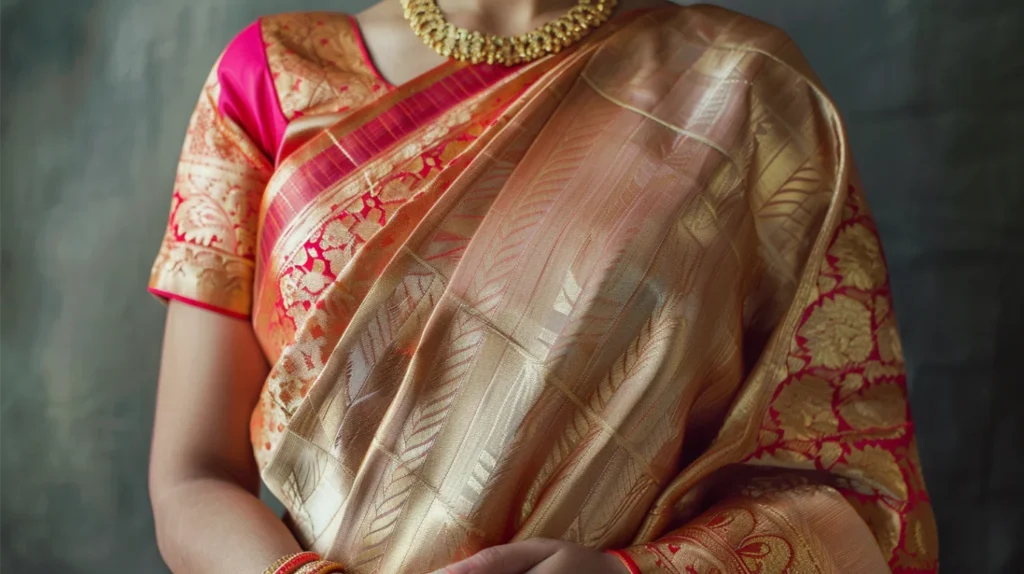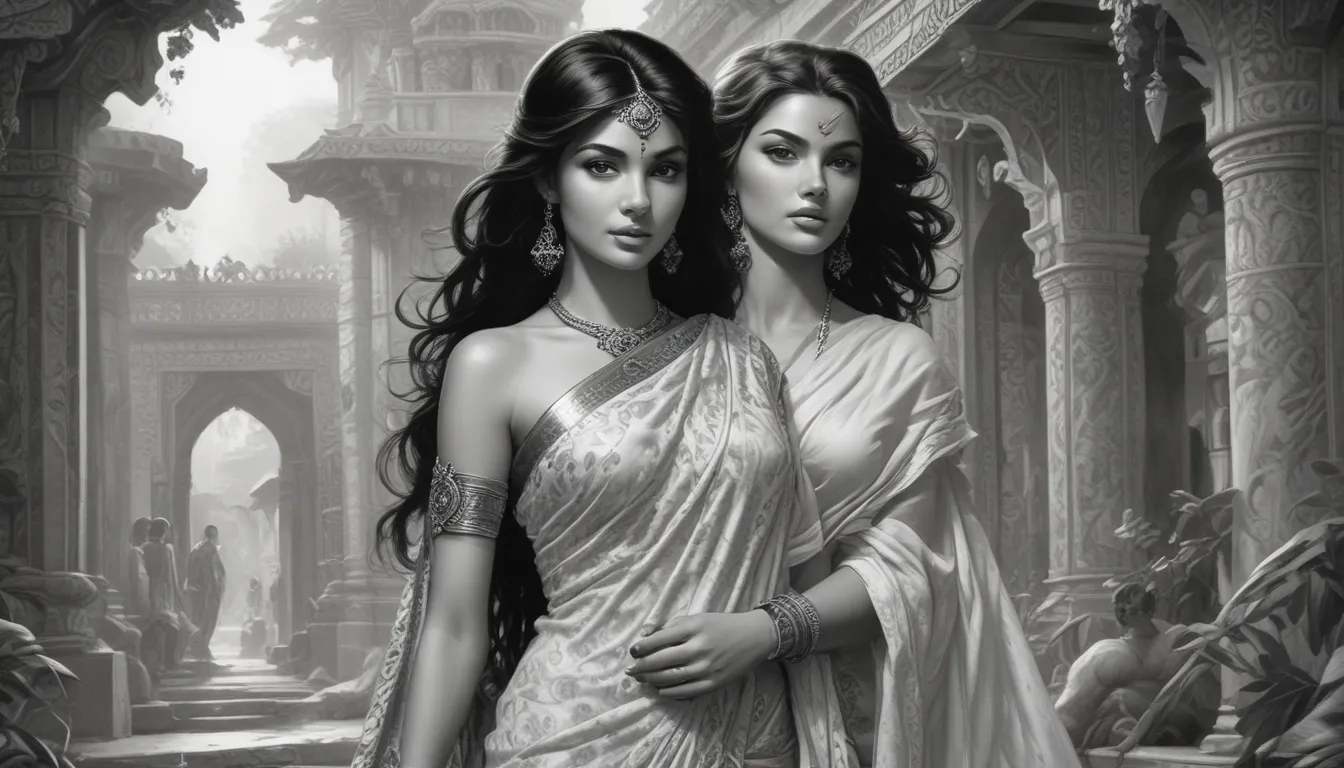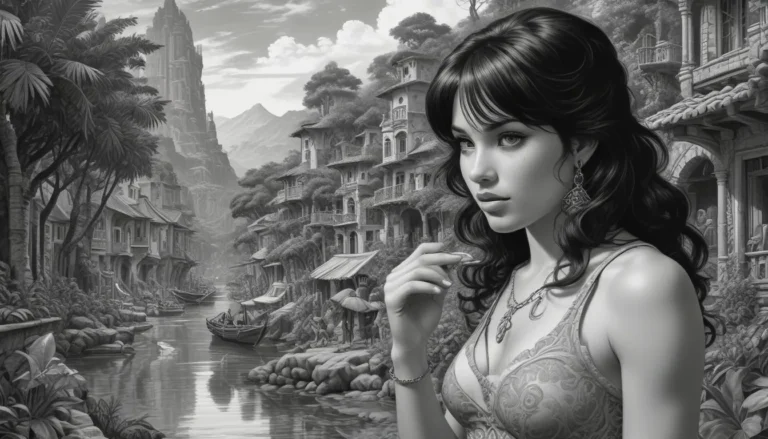The images in our articles are for illustrative purposes only and may not exactly match the content. They are intended to capture your interest and complement the text, not to replace it.
Welcome to the captivating world of the sari, a traditional Indian garment that exudes timeless elegance and cultural richness. From its vibrant colors to intricate embroidery, the sari has a universal appeal that transcends borders, bringing people together in admiration of its beauty. Join us on a journey to discover fascinating facts about the sari, from its exquisite craftsmanship to its global influence, as we unravel the hidden gems of this iconic attire.
1. The Timeless Elegance of the Sari
The sari is not just a piece of clothing; it is a symbol of tradition and heritage that has stood the test of time in Indian culture. For centuries, women have draped themselves in this graceful attire, embodying the essence of femininity and sophistication. The sari’s enduring appeal lies in its ability to adapt to changing times while maintaining its core elegance and cultural significance.
2. Versatility at Its Best
One of the most remarkable aspects of the sari is its versatility, allowing for endless possibilities in draping styles and expressions of creativity. From the classic Nivi drape to the trendy half-sari, there are numerous ways to wear this timeless garment. The sari’s adaptability enables women to showcase their personal style and creativity, making it a canvas for self-expression.
3. A Kaleidoscope of Colors
Saris come in a dazzling array of colors, catering to every taste and occasion. From bold and vibrant hues like crimson red and emerald green to soft and subtle pastels like blush pink and sky blue, the color palette of saris is a feast for the eyes. Each color holds a special significance in Indian culture, with red symbolizing love and passion, while yellow represents prosperity and happiness.

4. Mastering the Art of Draping
Draping a sari is an art form that requires skill and practice. Each region in India has its unique drape style that reflects its cultural heritage. From the Bengali style with its pleated pallu to the Gujarati style with its intricately tucked pleats, the variations in draping techniques add to the sari’s charm. Learning to drape a sari is a rite of passage for many Indian women, passed down from mothers to daughters.
5. Luxurious Fabrics Galore
Saris are crafted from a variety of luxurious fabrics, offering options for different seasons and occasions. Silk saris, known for their opulence and sheen, are a favorite for weddings and festive events. Chiffon and georgette saris, with their lightweight and flowy nature, are perfect for summer gatherings and evening soirées. Cotton saris, on the other hand, offer comfort and breathability for everyday wear.
6. Intricate Embroidery Work
Many saris feature intricate embroidery, showcasing the craftsmanship of Indian artisans. From delicate zardozi work with gold and silver threads to vibrant kantha stitches, the embroidery on saris adds an element of elegance and sophistication. Each stitch tells a story, reflecting the rich cultural heritage and artistic traditions of India.
7. The Magic of Handloom Weaving
Traditional silk saris are meticulously handwoven, often taking weeks or months to complete. The process of creating a handloom sari involves the dedication and skill of expert weavers who carefully interlace each thread to create intricate patterns and designs. Handloom saris are prized possessions, cherished for their unparalleled quality and the love woven into every inch of the fabric.
8. The Allure of Kanjeevaram Saris
Kanjeevaram saris, originating from the town of Kanchipuram in Tamil Nadu, are known for their opulence and exquisite craftsmanship. These silk saris are characterized by their rich colors, heavy zari work, and intricate motifs. Kanjeevaram saris are a coveted possession for brides and collectors, symbolizing luxury and traditional elegance.
9. Lightweight Grace of Georgette
Georgette saris are loved for their flowing drape and lightweight feel, making them a popular choice for festive occasions and summer events. The sheer fabric of georgette saris lends a delicate and ethereal look, making the wearer feel graceful and feminine. The versatility of georgette allows for experimentation with prints, embellishments, and unique color combinations.
10. Fusion of Fashion and Tradition
Contemporary designers have infused modern elements into the sari, experimenting with innovative drapes, fusion designs, and unconventional fabrics. From pre-stitched saris to sari gowns, the sari has undergone a fashionable evolution while retaining its traditional essence. These modern interpretations have made the sari more accessible and appealing to a wider audience, including younger generations.
11. A Symbol of Grace and Femininity
The sari has long been associated with grace and femininity, enhancing the natural beauty of the wearer. The way a sari drapes around the body, accentuating curves and creating a fluid silhouette, is a testament to its ability to make a woman feel confident and beautiful. The sari’s timeless charm and elegance have made it a favorite among women of all ages and backgrounds.
12. Celebrating Cultural Heritage
The sari is more than just a garment; it is a symbol of India’s rich cultural heritage. Each region of India has its distinct style of saris, reflecting the diversity and uniqueness of the country’s traditions. From the intricate woven patterns of Banarasi saris to the vibrant tie-dye techniques of Bandhani saris, the sari celebrates the artistry and craftsmanship of India’s textile heritage.
13. Bridging Differences, Celebrating Diversity
Saris have the power to bring women together, transcending barriers of religion, region, and social status. Women from all walks of life, regardless of their background, find a common ground in their love for this cultural attire. The sari becomes a unifying force, celebrating the diversity and unity of Indian women.
14. A Canvas for Artistic Expression
Saris often feature hand-painted motifs that depict scenes from mythology, nature, or contemporary themes. These artistic renditions transform the sari into a canvas, showcasing the creativity and skill of the artists. From intricate kalamkari paintings to bold madhubani designs, the sari becomes a medium for storytelling and artistic expression.
15. Elegance in Every Thread
Many saris are adorned with zari, a type of thread made of silver or gold, woven into intricate patterns. The use of zari adds a touch of opulence and luxury to the sari, making it a statement piece for special occasions. The shimmering threads catch the light, creating a mesmerizing effect that enhances the overall elegance of the sari.
16. A Global Cultural Icon
The sari has garnered international acclaim, with celebrities and fashion enthusiasts worldwide embracing its exquisite charm. From Hollywood red carpets to international fashion weeks, the sari has made its mark on the global fashion scene. The sari’s universal appeal lies in its ability to flatter all body types and its timeless elegance that transcends cultural boundaries.
17. Draping for Elegance
The way a sari is draped and pleated can enhance or alter one’s silhouette, offering a unique and elegant look to each wearer. The art of draping a sari involves carefully pleating the fabric and securing it at the waist, creating a graceful fall of the pallu over the shoulder. Each drape style, whether it’s the classic Nivi drape or the modern butterfly drape, adds a distinct charm to the sari.
18. Embodying Grace and Sophistication
When a woman wears a sari, she embodies grace, poise, confidence, and sophistication. The sari has the power to transform the wearer, making her feel regal and elegant. The fluid drape of the sari, combined with the way it accentuates the feminine form, creates an aura of timeless beauty and refinement.
19. A Legacy Passed Down Through Generations
Saris are often treasured family heirlooms, passed down from mothers to daughters and grandmothers to granddaughters. These saris carry with them the stories, memories, and love of the women who wore them before. The act of passing down a sari is a symbolic gesture of preserving tradition, heritage, and the bond between generations.
20. Preserving Handloom Traditions
The sari industry plays a crucial role in supporting handloom weavers and preserving traditional weaving techniques. Many organizations and initiatives work towards promoting and sustaining the livelihoods of handloom weavers, ensuring that their skills and knowledge are passed on to future generations. By choosing handloom saris, we not only adorn ourselves in exquisite craftsmanship but also contribute to the preservation of India’s textile heritage.
As we conclude our journey through the enchanting world of the sari, it becomes evident that this traditional attire is more than just a piece of fabric. The sari is a symbol of cultural identity, a celebration of craftsmanship, and a testament to the resilience and beauty of Indian heritage. From its versatility and elegance to its ability to bring people together, the sari continues to captivate hearts and minds worldwide.
So, the next time you drape yourself in a sari, remember that you are not just wearing a garment; you are embracing a legacy of grace, tradition, and cultural splendor. Let the sari be your canvas for self-expression, and let its timeless charm inspire you to celebrate the beauty and diversity of Indian culture.







